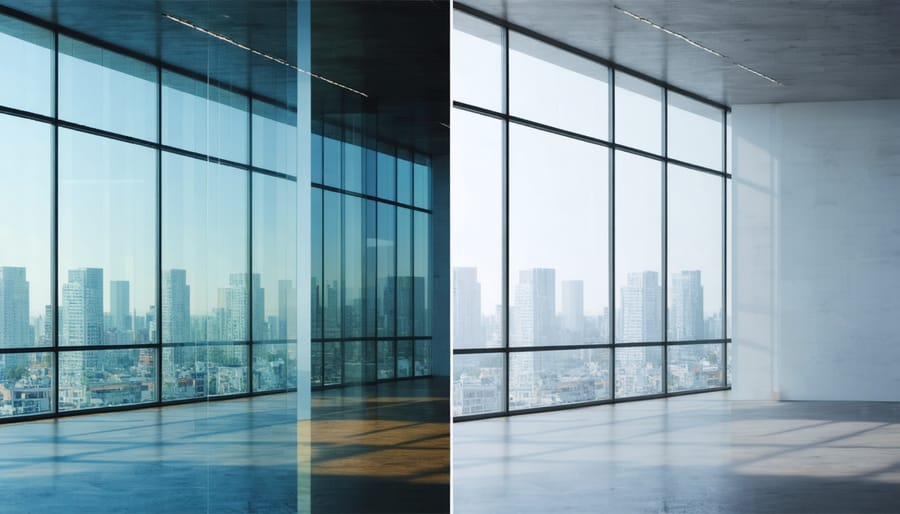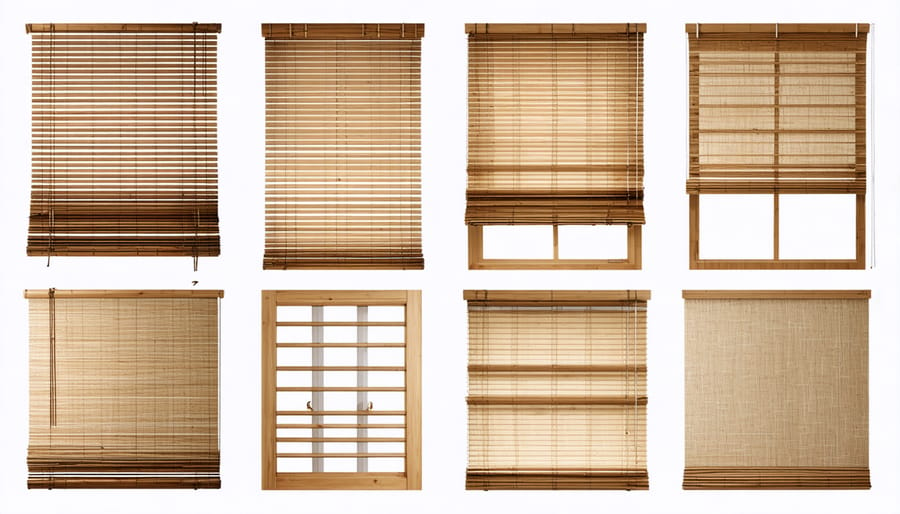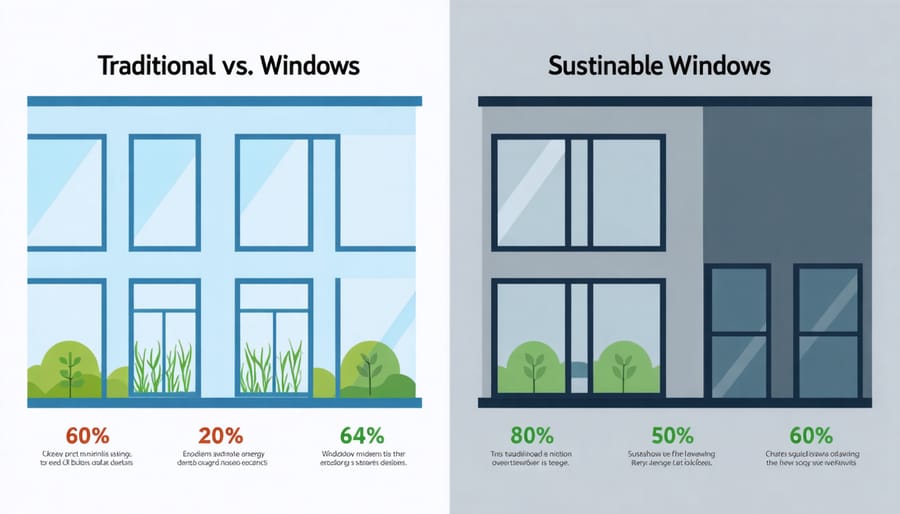Transform your home’s energy efficiency and environmental impact with energy-efficient window treatments that blend style with sustainability. Modern window solutions now incorporate recycled materials, advanced insulation technology, and smart automation systems to reduce energy consumption while maintaining aesthetic appeal. These innovations can cut heating and cooling costs by up to 30% while increasing your property’s value.
From solar-reflective glazing to thermally-efficient frames made from sustainable materials, today’s window solutions offer homeowners practical ways to minimize their carbon footprint without compromising on design. Smart glass technology automatically adjusts tint levels based on sunlight intensity, while multi-pane systems with low-E coatings provide superior insulation year-round.
The initial investment in sustainable windows typically pays for itself within 5-7 years through reduced energy bills and increased home value. Whether you’re building new or renovating, choosing eco-friendly window solutions represents a crucial step toward creating a more sustainable living space that benefits both the environment and your wallet.
Energy-Efficient Window Technologies Transforming Homes
Smart Glass and Dynamic Glazing
Smart glass, also known as dynamic glazing, represents one of the most innovative smart window technologies available today. Think of it as a window that adapts to your needs throughout the day, much like transition lenses in eyeglasses. When the sun is bright, these windows can automatically tint themselves to reduce glare and heat gain, while remaining clear on cloudy days to maximize natural light.
The magic behind these windows lies in electrochromic technology, which uses a small electrical charge to change the glass’s tint level. With just a tap on your smartphone or through automated settings, you can control how much light and heat enters your home. This means no more rushing to adjust blinds when the afternoon sun starts beating down!
While the initial investment in smart glass might be higher than traditional windows, the long-term benefits are impressive. Homeowners typically see a 20-30% reduction in cooling costs during summer months. Plus, you’ll never need to install additional window treatments, which saves both money and maintenance time.
The best part? These windows maintain your view of the outdoors while providing privacy and energy efficiency. They’re particularly useful in rooms with large windows or challenging sun exposure, where traditional solutions might fall short.

Solar-Powered Window Treatments
Solar-powered window treatments represent an exciting fusion of sustainable technology and smart home convenience. These innovative solutions harness the sun’s energy to power their operation, eliminating the need for electrical wiring or battery replacements while reducing your home’s energy consumption.
The most popular options include motorized blinds and shades equipped with small solar panels, typically mounted discreetly on the window frame or the treatment itself. These panels collect sunlight throughout the day, storing energy in built-in batteries to power the motors that raise, lower, or tilt the blinds. Most systems can operate for several days even without direct sunlight, making them reliable year-round.
What makes these treatments particularly appealing is their automation capabilities. Many models can be programmed to adjust automatically based on the time of day, temperature, or sunlight levels. Imagine your blinds automatically closing during peak heat hours in summer or opening gradually in the morning to wake you naturally with sunlight.
While the initial investment may be higher than traditional window treatments, solar-powered options offer significant long-term benefits. They reduce energy costs by optimizing natural light and heat gain, require minimal maintenance, and eliminate the ongoing expense of batteries or electricity. Plus, many systems now integrate seamlessly with smart home platforms, allowing you to control them through your smartphone or voice commands.
For optimal performance, consider placing solar-powered treatments on south-facing windows where they’ll receive maximum sunlight exposure. Most systems are DIY-friendly, though professional installation ensures proper setup and functionality.
Eco-Friendly Materials Making a Difference

Recycled and Renewable Materials
When it comes to sustainable window treatments, the materials used play a crucial role in reducing environmental impact. Bamboo has emerged as a standout choice, offering both sustainability and style. This fast-growing grass reaches maturity in just 3-5 years, making it a highly renewable resource. Bamboo blinds and shades bring natural texture and warmth to any room while providing excellent light control.
Recycled fabrics are another eco-friendly option gaining popularity. Many manufacturers now create stunning curtains and drapes from post-consumer plastic bottles and recycled polyester. These materials not only keep waste out of landfills but also require less energy to produce than virgin materials. The result? Beautiful, durable window treatments that tell a compelling sustainability story.
Cork is an often-overlooked sustainable material that’s making waves in window treatment design. Harvested from the bark of cork oak trees without harming them, cork offers natural insulation properties and unique aesthetic appeal. It can be used in cellular shades or as decorative elements in other window treatments.
Reclaimed wood shutters and blinds give new life to old materials while adding character to your space. These pieces often come with interesting histories and natural weathering that can’t be replicated. Look for certified salvaged wood to ensure you’re getting authentically recycled materials.
For those seeking innovative solutions, some manufacturers now offer window treatments made from agricultural byproducts like corn husks and wheat straw. These materials would otherwise go to waste but instead create durable, attractive window coverings that minimize environmental impact.
Low-Impact Manufacturing Processes
The manufacturing of sustainable windows has come a long way, with innovative companies adopting eco-friendly production methods that minimize environmental impact. Modern facilities now utilize renewable energy sources like solar and wind power to run their operations, significantly reducing carbon emissions during the manufacturing process.
Water conservation plays a crucial role, with many manufacturers implementing closed-loop water systems that recycle and reuse water throughout the production process. This approach can save thousands of gallons annually while maintaining high-quality results.
Waste reduction is another key focus area. Leading manufacturers employ precise cutting techniques and advanced computer modeling to maximize material usage and minimize scraps. Any waste materials, such as glass and aluminum, are carefully sorted and recycled back into the production cycle whenever possible.
Many facilities have switched to low-VOC (Volatile Organic Compounds) adhesives and finishes, creating healthier working conditions while reducing harmful emissions. The use of water-based finishes instead of solvent-based ones has become increasingly common, offering excellent durability without the environmental drawbacks.
Local sourcing of materials helps reduce transportation emissions and supports regional economies. Manufacturers are increasingly partnering with nearby suppliers who share their commitment to sustainability, creating a more environmentally responsible supply chain.
Quality control measures ensure that sustainable windows meet or exceed industry standards while maintaining their eco-friendly credentials. This includes rigorous testing for durability and performance, ensuring that these environmentally conscious products deliver long-lasting value for homeowners.
By choosing windows produced through these low-impact manufacturing processes, you’re not just investing in your home’s efficiency – you’re supporting companies that prioritize environmental stewardship and responsible production methods.
Cost-Effective Implementation Strategies
Budget-Friendly Options
Creating a sustainable home doesn’t have to break the bank. There are several budget-friendly window treatment options that can help reduce your energy costs while being environmentally conscious. One of the most affordable solutions is installing thermal curtains, which typically cost between $20-50 per panel and can significantly reduce heat loss during winter months.
DIY draft stoppers are another cost-effective option, costing less than $10 in materials. You can make these using fabric scraps and rice or dried beans to create an effective barrier against cold air. Similarly, window films offer excellent value, ranging from $15-30 per window, and can be installed easily with basic household tools.
Consider upcycling old shutters or blinds by refinishing them with eco-friendly paint or natural oils. This not only saves money but also keeps materials out of landfills. For a more permanent solution, cellular shades are a mid-range option starting at around $30-40 per window, offering excellent insulation properties and durability.
Second-hand stores and architectural salvage yards often have high-quality window treatments at fraction of retail prices. Don’t overlook simple solutions like strategically placed houseplants near windows, which can provide natural shade in summer while adding beauty to your space. Remember, combining multiple affordable solutions often yields better results than a single expensive option.
ROI and Energy Savings
Investing in sustainable windows might seem costly upfront, but the long-term financial benefits are impressive. Homeowners typically see a 15-25% reduction in their energy bills after installing energy-efficient windows, with the investment usually paying for itself within 5-7 years.
Let’s break down the numbers: A standard home with sustainable windows can save between $250-$450 annually on heating and cooling costs. While initial installation might cost between $8,000-$12,000 for an average-sized home, you can offset this expense through tax credits for sustainable windows and utility company rebates.
Beyond direct energy savings, sustainable windows increase your property value by approximately 70-80% of the project cost. They also reduce UV damage to your furniture and flooring, saving you money on replacements and maintenance over time.
The ROI becomes even more attractive when you consider the rising energy costs. With utility rates increasing by an average of 3% annually, your energy savings will grow year after year. Plus, many sustainable windows come with warranties of 20 years or more, ensuring long-term performance and peace of mind.
Remember, while calculating ROI, factor in improved comfort, reduced noise pollution, and increased home marketability – benefits that may not have a direct dollar value but significantly enhance your living experience.

Installation and Maintenance Tips
Proper installation and maintenance are crucial for maximizing the benefits of your sustainable windows. Start by following smart window installation tips to ensure optimal performance from day one. If you’re not confident with DIY installation, consider hiring a certified professional who specializes in energy-efficient windows.
Regular maintenance is key to extending the life of your sustainable windows. Create a seasonal maintenance schedule that includes these essential tasks:
Spring and Fall:
– Clean window tracks and weep holes to prevent water damage
– Inspect weatherstripping and replace if worn
– Check for air leaks around frames and seal gaps
– Clean glass with eco-friendly solutions to maintain clarity
Summer:
– Test window operations for smooth movement
– Lubricate hinges and locks with natural lubricants
– Check exterior caulking for cracks or separation
– Clean screens and repair any damage
Winter:
– Install storm windows if applicable
– Add weatherization film for extra insulation
– Check for frost or condensation issues
– Ensure proper ventilation to prevent moisture buildup
For daily care, use microfiber cloths instead of paper towels when cleaning, and opt for natural cleaning solutions like vinegar and water. Pay special attention to the window’s energy-efficient features, such as low-E coatings or gas fills, and avoid using abrasive cleaners that might damage these components.
If you notice any issues like difficult operation, fogging between panes, or damaged seals, address them promptly to maintain energy efficiency. Keep warranty information handy and don’t hesitate to contact manufacturers for specific maintenance guidelines or professional repairs when needed.
As we’ve explored throughout this guide, sustainable windows are more than just an eco-friendly trend – they’re a smart investment in your home’s future. By choosing energy-efficient materials, implementing proper insulation techniques, and selecting environmentally conscious window treatments, you’re not only reducing your carbon footprint but also creating a more comfortable living space while saving on energy bills.
Remember that sustainability doesn’t mean sacrificing style or comfort. Today’s market offers numerous options that blend aesthetic appeal with environmental responsibility, from recycled materials to smart glass technologies. Whether you’re building a new home or upgrading existing windows, every sustainable choice makes a positive impact on both your living environment and the planet.
Start small if you need to – perhaps begin with updating your window treatments or adding weatherstripping. As you become more comfortable with sustainable options, you can gradually implement more comprehensive solutions. The key is to make informed decisions that align with both your environmental goals and practical needs.
By investing in sustainable windows today, you’re contributing to a greener future while enjoying immediate benefits like improved home comfort and reduced energy costs. Let your windows become a testament to how beautiful, practical, and responsible sustainable living can be.
Take the first step toward more sustainable windows today – your home, wallet, and the environment will thank you for it.
